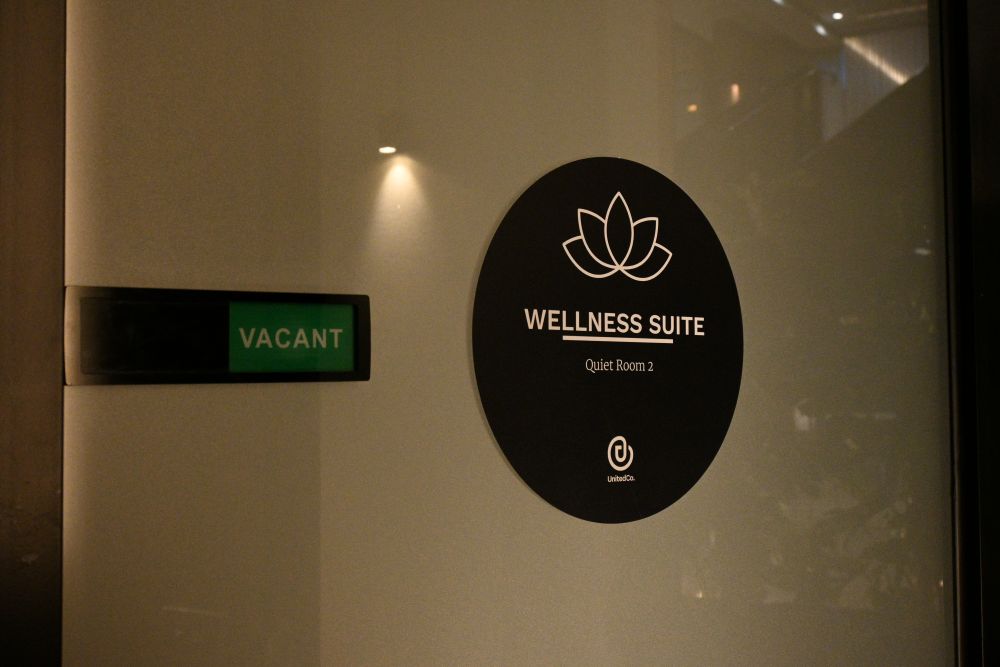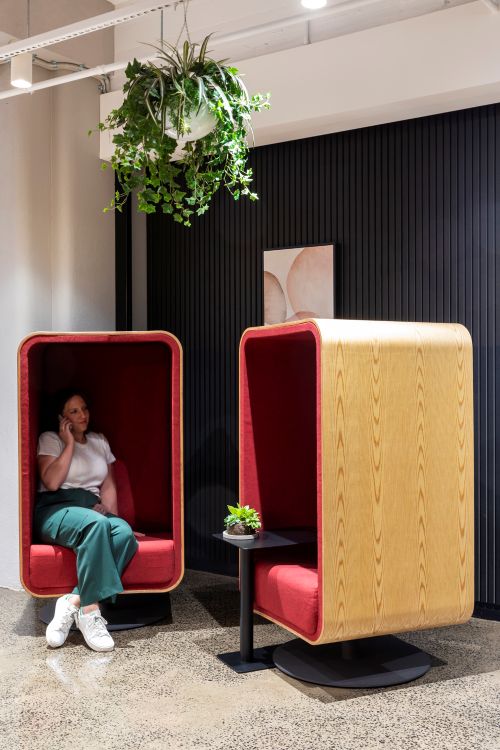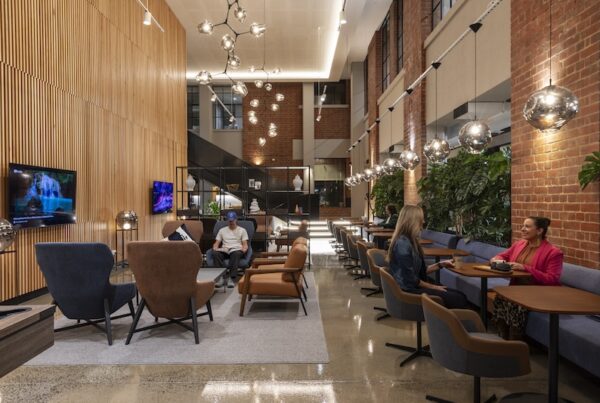
As the way we work continues to evolve, professionals and teams are seeking environments that offer flexibility, comfort, and opportunities to recharge throughout the day. This shift has placed a renewed spotlight on breakout spaces, areas designed to support short breaks, informal conversations, and moments of creative reset. In today’s shared office spaces, breakout areas are no longer a decorative extra but a fundamental part of creating a workplace that supports both productivity and work-life balance. When people have access to spaces where they can step away, reset, or connect casually with others, the entire workday feels more sustainable, more dynamic, and more human.
What Are Breakout Spaces?
Breakout spaces are flexible communal areas designed to offer an alternative to traditional desks, meeting rooms, or high-focus workstations. They sit somewhere between a workspace and a relaxation zone, comfortable, open, and approachable. Unlike formal meeting rooms, breakout areas are intentionally casual. They can take the form of lounge seating, café-style tables, quiet nooks, outdoor sections, or soft-seating corners where teams can sit together without the structure of a scheduled meeting.
Their purpose is simple, to give people space to step out of their usual workflow, reset their focus, and interact with others in a more relaxed way. In shared office spaces, where workers and teams often come from different industries and backgrounds, these breakout zones help bridge the gap, encouraging connection and natural collaboration.
The Role of Breakout Spaces in Shared Office Spaces


In shared office spaces, people work alongside one another without necessarily being part of the same organisation. This creates an environment full of potential with new partnerships, casual conversations, cross-industry learning, but only if the space encourages people to interact. That’s where breakout spaces become especially valuable.
They offer neutral ground where individuals can comfortably gather without booking a room or disrupting others. Breakout areas help soften the overall work environment, making the office feel less rigid and more welcoming. They encourage movement throughout the day, helping people disconnect from their screens, break the pattern of sitting for long periods, and return to work refreshed. They also give freelancers, remote workers, and small business teams the opportunity to socialise and feel part of a broader community, an essential benefit of shared office environments.
When designed well, breakout areas transform a workspace from simply functional into a place that supports wellbeing, creativity, and meaningful interaction.
Key Benefits of Breakout Spaces
These kinds of spaces play a meaningful role in shaping how people work in flexible offices, collaborate and recharge throughout the day. Beyond offering a simple place to step away, they support focus, wellbeing and positive workplace culture. The sections below explore the key benefits of breakout spaces that make these areas essential in modern office spaces.
1. Supporting Work-Life Balance
One of the most important benefits of breakout spaces is the way they support healthier routines at work. In busy shared office spaces, it’s easy to become immersed in tasks for long stretches without realising how draining it can be. Breakout areas provide gentle cues to pause, breathe, and reset.
These moments play a meaningful role in how to set work boundaries and maintain a healthier work-life balance. A quick stretch in a lounge area, a quiet pause with a coffee, or a short reset between meetings can ease burnout, support mental wellbeing, and lift overall job satisfaction. When people feel supported through thoughtful space design, they stay more energised and more in control of their day.
2. Encouraging Informal Collaboration
Not all great ideas come from formal meetings. In fact, some of the most creative conversations happen when people casually cross paths. Breakout spaces create these opportunities by giving workers a comfortable place to interact without agenda or pressure.
A relaxed conversation while making tea or sharing a sofa can lead to unexpected insights, new partnerships or practical problem-solving. In shared office spaces, where diverse skill sets sit under one roof, these moments can spark collaboration that may not have happened otherwise. Breakout zones make it easy for people to approach one another, exchange ideas, and build connections that strengthen the workplace culture.
3. Improving Productivity and Focus
It may seem counterintuitive, but stepping away from your desk can dramatically improve focus. Research consistently shows that brief mental breaks help restore attention, increase creativity, and prevent decision fatigue. Breakout spaces provide the perfect setting for this, which are inviting, quick to access, and conducive to changing your mental rhythm.
Whether someone needs five minutes to clear their mind or a quiet spot to gather their thoughts before a meeting, these areas help reset cognitive energy. In turn, people return to their tasks with renewed clarity and improved concentration.
4. Reducing Stress and Enhancing Wellbeing
Modern work can be intense, and without the right environment, stress can easily build up. Breakout spaces help ease that tension by offering environments that feel softer, quieter, and more calming than traditional general work areas.
Comfortable seating, warm lighting, greenery, and soft furnishings help create an atmosphere where people can decompress. Having these spaces nearby makes it easier for workers to manage their stress levels throughout the day rather than waiting until they leave the office. In shared office spaces, this contributes to a more grounded and uplifting work atmosphere for everyone, including teams that don’t know each other personally but still share the same environment.
5. Building a Sense of Community in Shared Office Spaces
Community is a powerful motivator at work. It helps people feel supported, connected, and engaged. In shared office spaces, communities can be harder to develop because people often work for different companies or independently. Breakout spaces naturally bring people together, whether it’s through shared lunch areas, casual seating, or simply standing near a communal bench.
These small, repeated interactions help people feel more at ease in the workplace. Over time, friendly faces become familiar, conversations become more natural, and the shared environment transforms into a supportive professional community.
Types of Breakout Spaces for Different Needs
Not all breakout spaces serve the same purpose. Different styles of breakout areas support different rhythms, whether someone needs quiet reflection, relaxed social interaction or a quick energy boost. The following sections outline the most common types of breakout spaces that enhance wellbeing on the workday.
Quiet Zones for Individual Reset
These areas are ideal for moments when workers need calm. Soft seating, natural light, and minimal noise make quiet zones perfect for reading, decompressing, preparing for meetings, or simply refocusing.
Lounge Areas for Relaxed Social Interaction
With couches, small tables and warm lighting, lounge-style breakout spaces encourage people to chat, share ideas, or unwind. They sit at the heart of many shared office spaces, offering a comfortable retreat during busy days.
Café-Style Areas for Energy and Flow
Offices with in-house cafes combine social energy with practical function. They’re great for casual catch-up, quick check-ins, or coffee breaks that become mini brainstorming sessions.
Outdoor or Wellness-Focused Breakout Spaces
Whether it’s an outdoor terrace, greenery-filled corner, or wellness-oriented spot, these breakout areas help workers connect with nature, breathe fresh air, and enjoy a refreshing pause that supports both psychological and physical wellbeing.

As workplace expectations shift toward flexibility, comfort and wellbeing, breakout spaces have become essential to the design of effective shared coworking spaces. They offer moments of rest, spark creativity, and help people connect with one another, even when they work in different fields. Most importantly, breakout areas support healthier rhythms throughout the day, allowing professionals to maintain stronger work-life balance while still staying productive and engaged. When workplaces offer spaces that feel open, welcoming and human-centred, they create conditions where people can do their best work and enjoy the experience along the way.
To explore a flexible shared workspace designed with these principles in mind and visit United Co. for a free tour.






